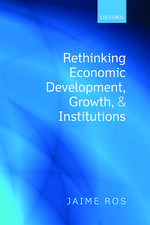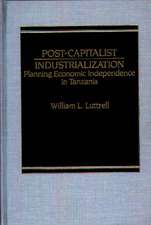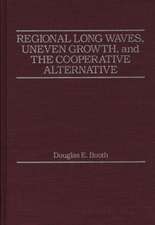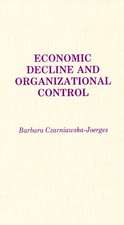Governments and Markets in Economic Development Strategies: Lessons from Korea, Taiwan, and Japan
Autor Professor Alam, M. Shahid, Mohammad Shahid Alamen Limba Engleză Hardback – 31 mai 1989
Many social scientists have explored the economic success of Korea, Taiwan, and Japan, each of which has experienced dramatic economic growth over a relatively short period of time. M. Shahid Alam presents a controversial thesis by emphasizing the interventionist character of the export-oriented approach to the success of these three countries. Concern with the rapid development of comparative advantage in the industries they have promoted has, he believes, distinguished these three economies. This concern has led to both market and non-market interventions with the trade regime, capital markets, market structures, etc. The book explores how Taiwan and Korea changed from import substitution to the export-oriented approach with significant success. The point is made that export-oriented economies make more demands on the government, so that success in different countries cannot be assured.
The book begins with an examination of export-oriented economies and the reasons for their success. Three separate chapters follow detailing the structure, choice and implementation of economic policies in South Korea, Taiwan, and Japan. Finally, the book assesses export-oriented strategies and their application to other countries. Students and scholars of economics, business, and political science, will find this thought provoking book a source of stimulating ideas. In addition, the book has the potential for being used as a text for graduate and advanced undergraduate courses on East Asian economics and comparative economic development.
Preț: 344.90 lei
Preț vechi: 555.84 lei
-38% Nou
65.100€ • 70.57$ • 55.03£
Carte tipărită la comandă
Livrare economică 17 aprilie-01 mai
Specificații
ISBN-10: 0275929353
Pagini: 198
Dimensiuni: 140 x 216 x 16 mm
Greutate: 0.4 kg
Editura: Praeger
Descriere
The book begins with an examination of export-oriented economies and the reasons for their success. Three separate chapters follow detailing the structure, choice and implementation of economic policies in South Korea, Taiwan, and Japan. Finally, the book assesses export-oriented strategies and their application to other countries. Students and scholars of economics, business, and political science, will find this thought provoking book a source of stimulating ideas. In addition, the book has the potential for being used as a text for graduate and advanced undergraduate courses on East Asian economics and comparative economic development.


















